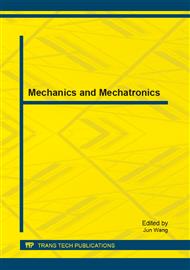p.602
p.611
p.616
p.623
p.630
p.636
p.642
p.649
p.654
Hierarchical Intelligent Alignment Control of Air Spring Vibration Isolation System of Ship Propulsion Plant
Abstract:
Alignment control of propulsion plant air spring vibration isolation system is a complicated Multi objects control problem. In this paper a new hierarchical intelligent control method of alignment control is brought out. Known from current hierarchical intelligent control methods with three layers, this method consists of task layout layer, control decision-making layer, control layout layer and control executive layer. The complicated alignment control task is decomposed into four hierarchical layers to reduce complexity. The control system has good control convergence capability and fast convergence speed. Test results validate the feasibility of this method.
Info:
Periodical:
Pages:
630-635
Citation:
Online since:
October 2013
Authors:
Price:
Сopyright:
© 2013 Trans Tech Publications Ltd. All Rights Reserved
Share:
Citation:


